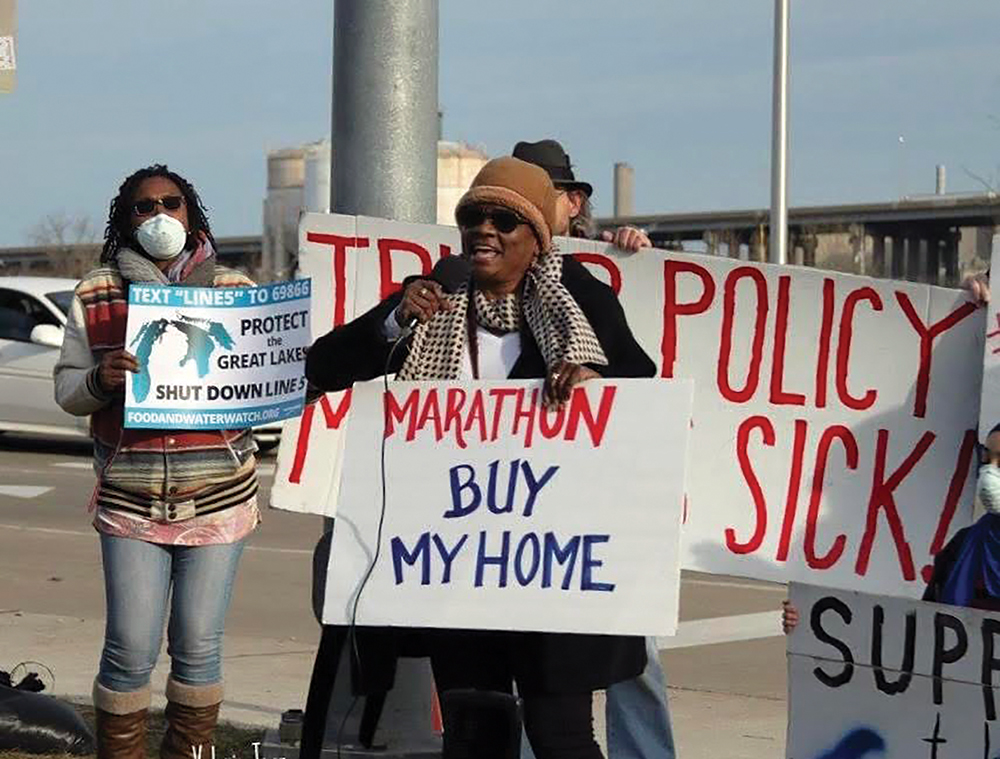Imagine waking up in the middle of the night to put on a face mask to block the horrific smell of chemical odors that seeped into your bedroom from nearby factories. That used to be my nightly routine. Wearing a facial mask is nothing new to me. I’ve been using them since 2007, the year my courageous nephew donated a kidney to me to extend my life. After surgery, my transplant team gave me a packet of masks to protect myself from germs because organ transplant anti-rejection medications also would suppress my immune system throughout my life. Since then, Covid has escalated my need to wear masks.
I initially wore masks to shield myself from human germs, but in 2017 I was regularly wearing facial masks for another reason. I had to shield myself from the chemical odors that overwhelmed my bedroom on most nights at around 2:30 a.m. when there was a massive release of factory toxins into our community.

My subdivision, Detroit 48217, was and still is the most polluted area in the entire state of Michigan. It is surrounded by more than 30 major polluters that self-report emissions to the Environmental Protection Agency and a Michigan state environmental department. The area is subjected to chemical releases from a tar sands oil refinery, steel mills, a municipal water treatment plant, asphalt production facilities, a multi-lane freeway, and a facility that bakes human waste into fertilizer. I nicknamed the biosolids fertilizer facility “the queasy-bake oven” after inhaling its putrid-smelling emissions.
In addition to polluted air, I discovered our former elementary school grounds were contaminated with enough lead in the soil to deem it an EPA brownfield. The school grounds were fenced off so no one could walk on the poisoned land, but the swings and climbing apparatus from my youth are still in place as a reminder that as children we played endlessly on that land.
I was diagnosed with kidney failure in 2005 after my sister died of the disease. My next-door neighbor’s kidneys also failed and my neighbor across the street died after years of dialysis treatments. It is important to note that when I was diagnosed with end-stage renal failure, I was not diabetic, my blood pressure was controlled, and I was a healthy weight. Many studies, including data from the CDC, have made a connection between kidney failure and lead contamination.
The largest polluter based in our ZIP code is an oil refinery that underwent a $2.2 billion expansion around 2010. The refinery conducted a home buyout plan near its facility but did not include our sector. The purchased area had a large white population. It felt unjust to me living in the predominantly Black area not to have our homes included in the buyout plan.
Trapped! That’s how we felt in our homes. Our home values had plummeted to $15,000 because no one wanted to move into toxic air. Many of us did not want to stay, but we also could not afford to leave
My calling to become an environmental justice organizer was launched. I strategically organized my neighbors, and after nearly eight arduous years of protest rallies, testimony before local government and congressional panels, trips to refinery shareholder meetings, and garnering support from outside our community, the refinery extended the buyout offer to our community in 2020.
I have transitioned to Memphis only to find a community that reminds me of home. The Boxtown neighborhood in Southwest Memphis is based near a refinery and they are dealing with the possibility of an oil pipeline being routed through their area. Many Memphians are also concerned about protecting the aquifer. I feel compelled to help inform people about what is happening there. I will continue to advocate for a healthy environment so that others do not end up tethered to a mask for life.
Emma Lockridge is a veteran news reporter who focuses on the environment and social justice initiatives. Formerly based in Detroit, she also is a photojournalist who has had exhibits of her impactful images.
